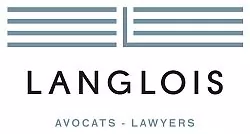In Teva Canada Limited v. TD Canada Trust, the Supreme Court of Canada found two banks liable for a $5.5 million cheque fraud scheme carried out by a former employee of the appellant, Teva Canada Ltd. In so doing, the Supreme Court has provided welcome clarity to a long-debated question: which innocent party – the employer or the collecting bank – should bear the risks resulting from employee cheque fraud?
The facts in this matter are straightforward. A former Teva employee fraudulently requisitioned 63 cheques worth roughly $5.5 million, ostensibly made payable to entities with names similar or identical to those of Teva's existing customers or suppliers, but to whom no debt was in fact owed. The fraudulent employee registered sole proprietorships bearing the names of these "payees"; deposited the cheques into related accounts opened with the respondent banks, as well as others; and withdrew the proceeds. Upon discovering the fraud, Teva sued the banks for conversion, a tort involving the wrongful interference with goods of another.
1. Conversion: strict liability and the irrelevance of negligence
Collecting banks (in this case, the respondents) are liable for conversion where they deal with the cheques "under the direction of one not authorized", and then make "the proceeds available to someone other than the person rightfully entitled to possession"1
Conversion is a strict liability tort, such that any negligence on behalf of the bank or the drawer of the cheque (in this case, Teva) is not a relevant consideration. However, a statutory defence to a conversion claim is available under section 20(5) of the Bills of Exchange Act ["BEA"], under which collecting banks can treat cheques made out to "fictitious or non-existing payees" as being payable "to bearer2" – not "to order3" – such that a collecting banks would not be liable for converting a cheque without a proper endorsement.
2. Fictitious and non-existing payees : an age-old identity crisis
On summary judgment before the Ontario Superior Court of Justice, the motion judge ruled in favour of Teva, finding that the banks could not properly avail themselves of the "fictitious or non-existing" payee defence. The Ontario Court of Appeal overturned this decision, concluding that the motions judge erred in its determination and found that all payees in question were either "fictitious" or "non-existing", such that Teva – and not the banks – must bear the losses stemming from the fraud.
The terms "fictitious" and "non-existing" found at s. 20(5) BEA are not defined in the Act. Since its first adoption in Canadian legislation in 1890, courts and academics have engaged in a protracted debate over this provision's proper interpretation – often with discordant results. Eventually, the Supreme Court of Canada adopted a line of jurisprudence, culminating with its decisions in Concrete Column4 and Boma5, which together crystallized the prevailing interpretation of s.20 (5) BEA. Each of these decisions was met with dissenting reasons and has attracted academic criticisms and debate. Arguably, at times, lower courts began to misconstrue the subtleties of the existing jurisprudence.
3. A two-step test: the SCC reaffirms and refines the existing state of law
In Teva, Abella J., writing for the majority, reaffirmed the existing state of the law and set out a clear two-step framework to determine whether a bank can successfully avail itself of the "fictitious or non-existing" payee defence:
Step one — the subjective fictitious payee inquiry — asks whether the drawer intends to pay the payee. If the bank proves that the drawer lacked such intent, then the payee is fictitious, the analysis ends and the drawer is liable. If the bank does not prove that the drawer lacked such intent, then the payee is not fictitious, and the analysis proceeds to step two.
Step two — the objective non-existing payee inquiry — asks if the payee is either (1) a legitimate payee of the drawer; or (2) a payee who could reasonably be mistaken for a legitimate payee of the drawer. If neither of these is satisfied, then the payee does not exist, and the drawer is liable. If either is satisfied, then the payee exists, and the bank is liable.6
This two-step framework is not a novel test – it is a distillate of the pre-existing jurisprudence, culminating with the SCC's rulings in Concrete Column and Boma. It sets aside any lingering doubt regarding the burden of proof under the "subjective fictitious payee inquiry" (i.e. step one), finding that "it is the bank, and not the drawer, who bears the burden of proving the drawer participated in the fraud [...]"7 In this regard, the Supreme Court at least implicitly rejects part of reasoning of the Ontario Court of Appeal, which had found "Teva has failed to show it intended the four payees who are or were its customers or the two non-existing payees to receive the proceeds of the cheques. All these payees were fictitious and the banks were entitled to treat all the cheques as payable to bearer"8.
With respect to the "objective non-existing payee inquiry" (i.e. step two), the Court clarified that this aspect of the test is objective, such that the drawer need not demonstrate that it actually reviewed or considered some or all of the impugned cheques in question and had developed a subjective belief that the named payee was a in fact real customer.9 This overturns another aspect of the reasoning of the Ontario Court of Appeal's which found that Teva adduced no evidence in to the effect that "it had considered the name of the payee on the cheque and, because of the similarity in name, had an honest, though mistaken, belief that the named payee was a real customer or service provider10".
Ultimately, the Supreme Court decided that, seeing as Teva was not complicit in the fraud and that the names used on the impugned cheques were either those of existing customers or very similar to existing customers, the Court found that the payees were not "fictitious" or "non-existing", and restored the decision of the motion judge.11
4. Stare decisis: the dissent calls for a clean break from precedent
By contrast, the dissenting opinion delivered by Justices Côté and Rowe JJ. proposed to overrule the Court's own precedents in Boma and Concrete Column and to adopt a "simplified objective approach12" to interpreting s. 20(5) BEA. Under this proposed approach: a payee will be non‑existing where the payee does not in fact exist at the time the instrument is drawn; and if the payee is an existing person, a payee will be found to be fictitious where there is no real transaction between the drawer and the payee.13 The approach favoured by the dissent is based, amongst other considerations, on the policy rationale that the employers – and not banks – are best suited to detect and prevent employee cheque fraud.
Unlike the dissenting justices, the majority of the Court was not satisfied that there were "compelling reasons" to overrule the leading line of jurisprudence on the basis that it was wrongly decided.14 The majority found that in the absence of such "compelling reasons", precedent must be respected:
Given this history, and before this Court jettisons a whole line of jurisprudence only to return to an older jurisprudence that has been consistently rejected since 1905, great care should be taken. This is not an argument for jurisprudential stagnation, but for a recognition that the public relies on our disciplined ability to respect precedent. There is no doubt that our jurisprudence on s. 20(5) has its critics. But as the Court noted in Canada v. Craig, [2012] 2 S.C.R. 489, to overrule its own decisions "the Court must be satisfied based on compelling reasons that the precedent was wrongly decided and should be overruled" (para. 25). All this to ensure certainty, consistency and institutional legitimacy (Craig, at para. 27). I do not share the view that such "compelling reasons" exist in this case.15
The Court did not accept that the existing jurisprudence reflected unsound public policy, particularly because banks, as significant beneficiaries of the bills of exchange system, should bear a degree of its inherent risks:16
Boma and Concrete Column have together served the commercial world for 40 years without serious complaint from that world. There is no evidence that the jurisprudence on fictitious and non-existing payees reflects unsound public policy on the allocation of risk. Banks are well-situated to handle the losses arising from fraudulent cheques, allowing those losses to be distributed among users, rather than by potentially bankrupting individuals or small businesses which are the victims of fraud. As Bray J. observed in the early case of Kepitigalla Rubber Estates, Ltd. v. National Bank of India, Ltd., [1909] 2 K.B. 1010, at p. 1026, "[t]o the individual customer the loss would often be very serious; to the banker it is negligible.17"
The majority found that, in order to allocate losses to a drawing company for failing to detect or prevent the fraud is inconsistent with strict liability. In this regard, the Court held that "[t]he question therefore is which of two innocent parties should bear the loss occasioned by fraud and not, as my colleagues suggest, who is more at fault?18"
5. A prelude to Parliamentary intervention?
Ultimately, the Court's revised two-step test refines and confirms the pre-existing state of Canadian law, as set out in Boma and Concrete Column. While the dissenting reasons illustrate the contentions nature of this topic, the prevailing judicial interpretation of the infamous "fictitious and non-existing" payee is now clearer than ever. As a result, at least for the foreseeable future, any changes to the existing state of law or its underlying policy equilibrium will likely be left to Parliament.
Footnotes
1 Teva Canada v. TD Canada Trust, 2017 CSC 51 [« Teva »] at 72.
2 "Bearer" means the person in possession of a bill or note that is payable to bearer (s.2, BEA). A bill is payable to bearer that is expressed to be so payable, or on which the only or last endorsement is an endorsement in blank (s. 20(3) BEA).
3 Under s.21 (1) BEA, "A bill is payable to order that is expressed to be so payable, or that is expressed to be payable to a particular person, and does not contain words prohibiting transfer or indicating an intention that it should not be transferable."
4 Royal Bank of Canada v. Concrete Column Clamps (1961) Ltd., [1977] 2 SCR 456.
5 Boma Manufacturing Ltd. v. Canadian Imperial Bank of Commerce, [1996] 3 SCR 727
6 Teva at para. 7.
7 Teva at 35 and 45
8 Teva Canada Limited v. Bank of Montreal, 2016 ONCA 94, at para. 87.
9 Teva at para. 49.
10 Teva Canada Limited v. Bank of Montreal, 2016 ONCA 94, at para. 50.
11 Teva at 73 to 76.
12 Teva at 80 (dissenting reasons).
13 Teva at 85 and 86 (dissenting reasons). .
14 Teva at 65.
15 Teva at 65.
16 Teva at 68.
17 Teva at 67.
18 Teva at 69.
The content of this article is intended to provide a general guide to the subject matter. Specialist advice should be sought about your specific circumstances.




